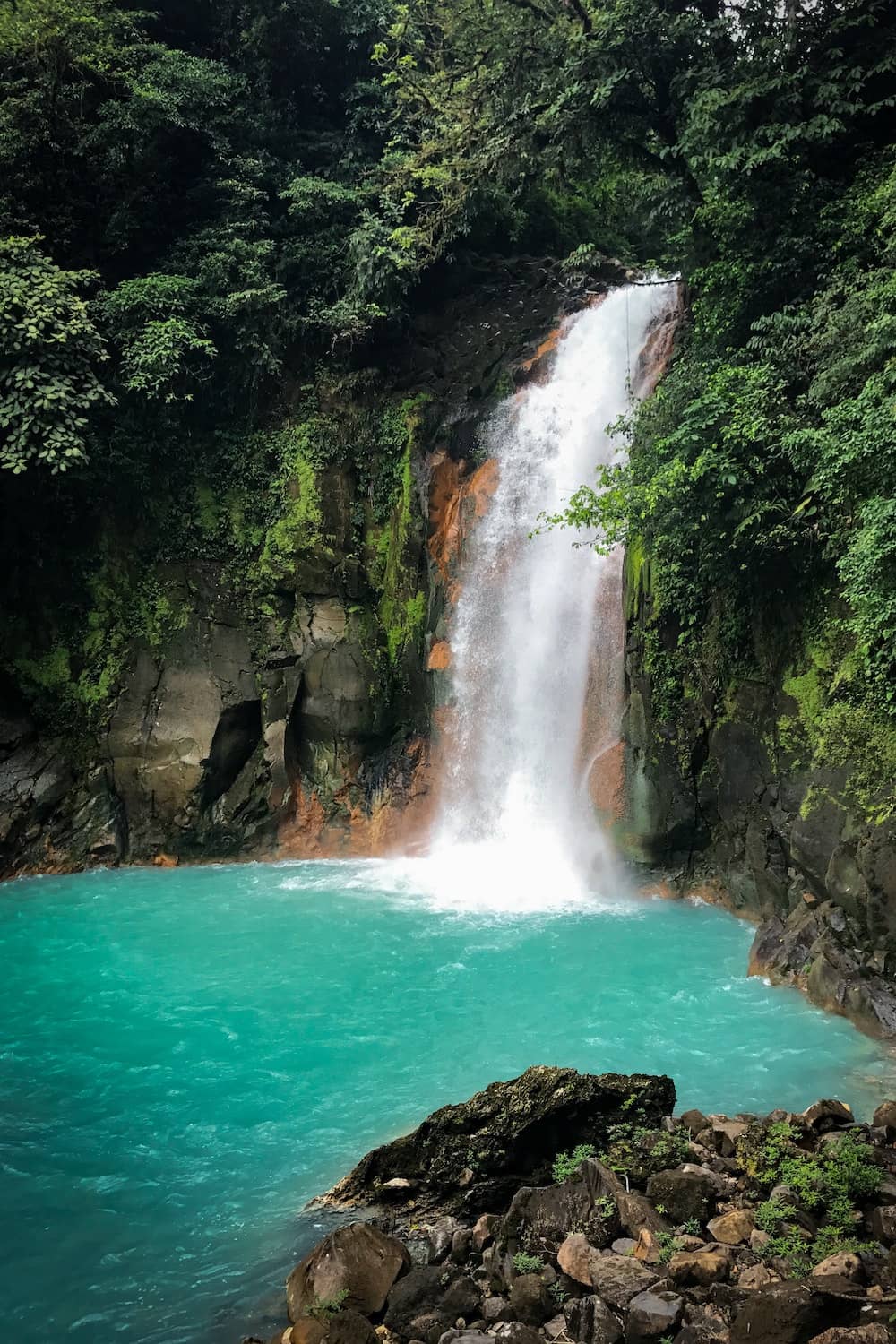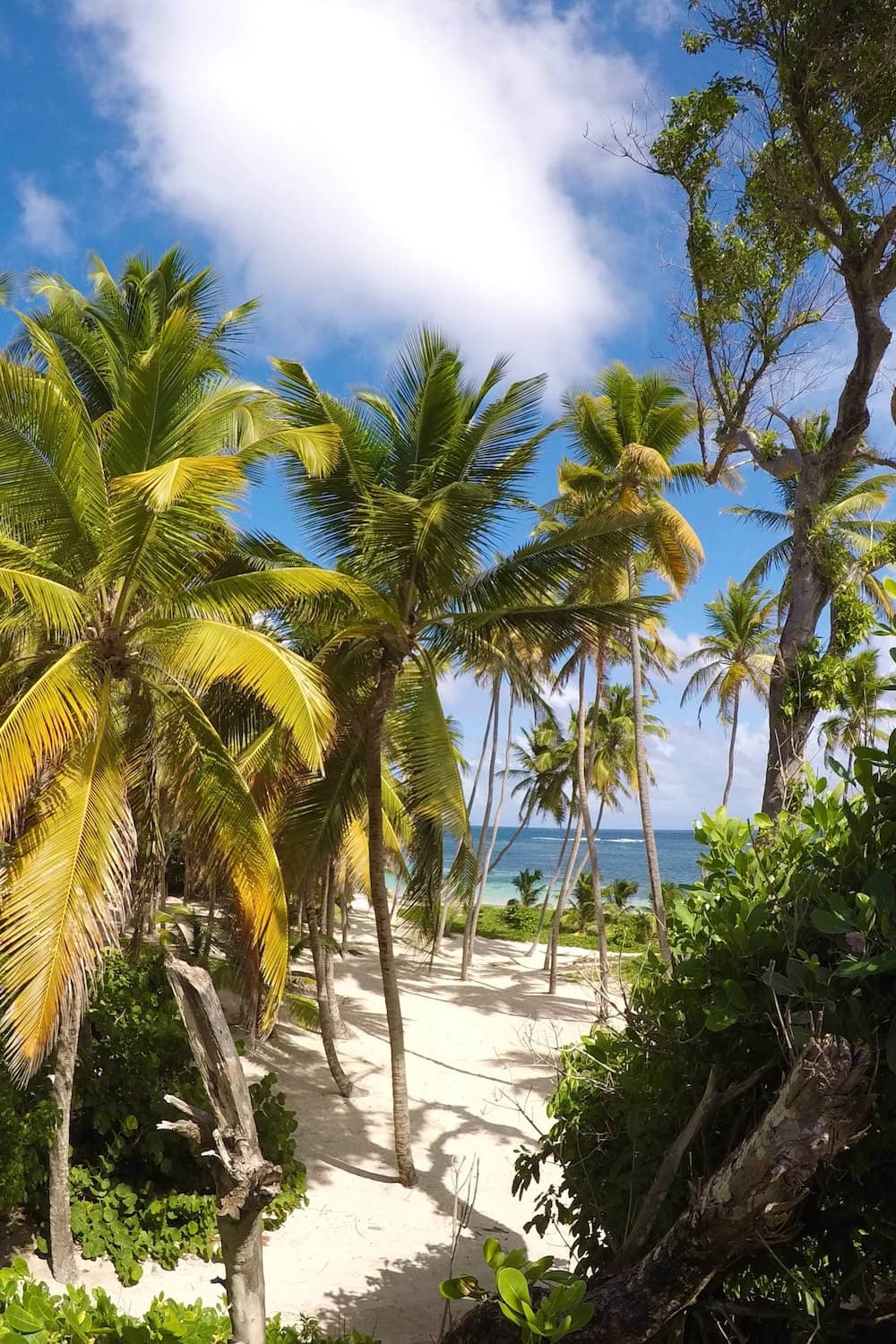What are Digital Nomads?
Digital nomads are people who are location-independent and use technology to perform their job, living a nomadic lifestyle. Digital nomads work remotely, telecommuting rather than being physically present at an office.
Digital nomads are usually entrepreneurs, freelancers or, increasingly, employees (as part of a Workation) who do most of their work online. They usually only serve their customers or clients online.
And that's what it's all about: it's just the combination of work and vacation.
The difference between Digital Nomad, work & travel and Workation.
Jumping from one place to another while managing one’s work online? Digital nomads travel around the world and work location-independent. However, being a Digital Nomad is normally considered a lifestyle. They may or may not have a home base, but they usually spend most of their time in different destinations. In theory, a Workation would be less of a commitment than a full-time nomad: they are designed to be temporary trips rather than a lifestyle.
In contrast to work & travel programs, one usually stay in one place and only travel around during the day for sightseeing.
Workation, on the other hand, was initially aimed exclusively at Digital Nomads such as the self-employed, freelancers or bloggers. In the meantime, however, the trend is intensifying, with entire teams of companies or even entire companies, depending on their size, opting for a Workation.
The advantages of being a Digital Nomad.
Digital nomads are often individuals who want to have freedom and flexibility with the jobs and time to travel. However, Digital Nomads do not need to live a minimal existence rich in experiences versus physical objects. They can still make lots of money - and additionally, they get to explore new cultures by putting down temporary roots in many locations each year.
Digital nomads have some advantages. They work and travel when and where they want. You will get a better understanding of different cultures. And ultimately they have lower living costs and a higher quality of living.
What are the numbers and facts?
How many Digital Nomads are there in the world? Too many count, but the figure is most likely in the millions. One company's research suggests there are 4.8 million global Digital Nomads, and that 17 million workers dream of going nomadic in the future.
According to a 2018 survey (the most recent figures as of April 2021) from FlexJobs, 18% of Digital Nomads report making six figures or more, and 22% make between $50,000 and $99,999. These figures show that 40% of Digital Nomads make $50,000 or more, but 60% make less than $50,000 a year. This indicates that a significant portion of Digital Nomads is making less than $50,000 a year.
Digital nomads in IT, software development and performance marketing can even earn over $125,000 remotely. If you come from countries like Europe or North America and calculate that you only have a quarter of the cost of living anywhere else in the world, this is a convincing argument.
How work, life balance and family can be combined.
Going on a trip around the world despite having children or living completely independent of location - is that possible? Of course it works! Traveling the world with Workation is by no means reserved for singles in their 20s.
A new era of location-independent lifestyle has begun. Families travel the world, work remotely, pursue their passion and offer their children the opportunity to learn and grow freely and independently. Many families have traveled in recent years. The motives are very different, but the goal is actually always the same: to spend more time together as a family and to experience more joie de vivre together as a family.
Digital Nomads in Africa.
Africa has an area of 30.2 million km², which is about 22% of the planet's total land area, and has a population of about 1.3 billion people. This makes it the second largest continent after Asia, both in terms of size and population.
Most Digital Nomads are drawn to South Africa and Namibia, followed by northern African countries such as Tunisia, Morocco and Egypt. In East Africa, Kenya and Tanzania are highly recommended. The warmth of the population is extraordinary and worth a trip.
The Seychelles or Zanzibar are ideal for sun worshipers, snorkelers and divers. Also you can observe the Big Five in Africa: elephant, rhino, cape buffalo, lion and leopard. They can be found in Botswana, Kenya, Mozambique, Namibia, Rwanda, Zimbabwe, South Africa, Tanzania and Uganda.
The Internet speed is perfectly sufficient for normal work, but it often has its weaknesses. For Digital Nomads who need the Internet very intensively, South Africa or Namibia are therefore ideal.
Digital Nomads in South America.
South America is the southern part of the American double continent, has a population of over 428 million people and is the fourth largest continental land area on earth with an area of 17,843,000 km².
Since South America was divided between Spain and Portugal in the Treaty of Tordesillas in 1494, Portuguese in its Brazilian variant is spoken in Brazil today, while Spanish is the national language in almost all other South American countries. Only in Suriname and on the islands of Aruba, Bonaire and Curaçao is Dutch spoken as the official language.
Internet speeds are generally good, but can slow down a bit in rural areas or countries like Aruba, Bonaire and Curaçao. This is sufficient for normal work, but you should be patient for intensive use.
Digital nomads in North America.
North America has around 529 million inhabitants and is the most urbanized part of the world at 81 percent. The largest metropolitan areas include Mexico City, New York City, Los Angeles, Chicago and Toronto.
North America includes Greenland, which is autonomously part of Denmark, Canada, the United States, Mexico, Central America, and several Caribbean island nations. Still, Digital Nomads like to look at Central America and the Caribbean separately, as these regions have their distinct advantages.
Basically, the Internet speed in countries like the USA and Canada is exceptional and does not pose any problems. In Central America and the Caribbean, the Internet can cause problems, as the infrastructure has its pitfalls.
Digital Nomads in Central America.
Central America is the southernmost region of North America. It lies between Mexico and South America and includes the countries of Panama, Costa Rica, Nicaragua, Honduras, El Salvador, Guatemala and Belize.
Central America allows travelers to experience a variety of complementary destinations, with each experience satisfying a different desire. The region is ideal for embarking on a multi-destination trip where travelers will find a combination of attractions, services and connections that will enrich the experience of their trip
Internet speed is generally not a problem in countries like Mexico or Costa Rica. But here, too, you should be aware that there are restrictions, especially in rural areas.
Digital nomads in the Caribbean.
The Caribbean is a region in the western, tropical part of the Atlantic Ocean north of the equator. As part of the Central American subcontinent, it consists of the islands and archipelagos on and in the Caribbean Sea and the sea area between them. At the western end, the Caribbean extends into the Gulf of Mexico.
There are just too many countries to visit here as a Digital Nomad. A few examples are the Bahamas, Jamaica, the Dominican Republic, Puerto Rico, the ABC Islands, or Cuba.
The Internet speed is good enough for normal work. However, you should find out about the speeds beforehand. In Cuba, for example, it can often happen that the electricity and the Internet fail completely for several days and the Internet speed is often very low. In other countries this is much better.
Digital Nomads in Europe.
Europe is not just limited to the European Union. The list of the states of Europe lists the 47 states and extraterritorial areas of the subcontinent Europe. Countries like Germany, France, the Netherlands or Great Britain belong to the continent of Europe, as do Turkey and the Ukraine.
The culture in Europe is therefore very diverse and therefore offers Digital Nomads extensive opportunities for sights and nightlife. There is a special feature for the European Union: within the states of the EU you can move freely without border and customs controls.
The Internet speed is consistently excellent in Europe and can also be used for intensive work without any problems.
Digital nomads in Asia.
In general, Asia is one of the most popular destinations for Digital Nomads. One of the first and most popular destinations is Bali in Indonesia, which is now heavily overbooked by Digital Nomads.
However, there are now many countries in Asia that are ideal for Digital Nomads. Whether Vietnam, Thailand or India, all of these countries are rich in culture that is worth discovering. And many of these countries have become real hot spots due to the low cost of Digital Nomads.
Since many of these countries have recognized that the Digital Nomad trend is constantly evolving, they have already adjusted to it. Internet speed is now impressive in many of these countries. There are also plenty of co-work spaces and internet cafes. Poor internet speeds are mostly found in rural areas. Therefore, you should inform yourself in advance.
Digital Nomads in the Near East.
Core Near East countries include Syria, Iraq, Lebanon, Israel, Jordan, Saudi Arabia, Kuwait, Bahrain, Qatar, United Arab Emirates, Oman and Yemen. However, due to the current situation, only Israel and the United Arab Emirates have developed as hot spots.
Countries like Israel or the United Arab Emirates are now famous for their opportunities as a Digital Nomad. However, it is important to note that travel to these regions is always associated with certain uncertainties. Not to forget that alcohol is often strictly forbidden in Arabic countries.
Internet speeds in countries like Israel and the United Arab Emirates are excellent and not lagging behind the speeds of the European Union, USA or Canada. Kuwait, Qatar, Saudi Arabia and Bahrain also clearly deliver in terms of speed in the big cities.
Digital nomads in Australia.
Australia is said to have the most venomous wildlife in the world. There is dense rainforest, wide swamps, high mountains, rugged cliffs, fertile farmland, deep gorges and of course a diverse underwater world. Everyone is sure to find what they are looking for in Australia - and quite possibly a lot more.
Australia is ideal for Digital Nomads because of the fantastic wildlife, the almost endless expanses of the country and the crazy down-under mentality of the inhabitants.
Internet speeds in Australia are excellent and are not a problem even in most remote areas. Even working for intensive projects is absolutely possible here.
Digital Nomads in Oceania.
Oceania is the name for the island world of the Pacific north and east of the continent of Australia. The more than 7,500 islands together cover a land area of 397,000 square kilometers and extend over a sea area of about 70 million square kilometers. About 2100 of the islands are inhabited, a total of 9.9 million people live there.
In the most common definition, only Polynesia, Melanesia, and Micronesia belong to Oceania. Both New Zealand and Hawaii are assigned to Polynesia, since both were settled by Polynesians, who were of great importance for their cultural development. Mainly known are New Zealand or the Fijis. But also countries like Tonga, Vanuatu or Tuvalu are absolutely worth seeing.
Internet speed varies greatly here. While you can expect very fast speeds in New Zealand, things are often mixed in the smaller countries. Please always inquire in advance which current speeds can be delivered.
Workation - it's the new business lifestyle.
Workation is a portmanteau made up of the two American terms “work” and “vacation” – i.e. work and vacation. And that's what it's all about: the combination of work and vacation. It is a traveling worker or working traveler concept.
At first glance, both terms contradict each other, because those who work don't take vacations, and those who take vacations don't work. At second glance, however, this has not been the case for many workers for a very long time: they read and answer e-mails on vacation, participate in video conferences in hotel rooms or compare offers from suppliers between breakfast on the hotel veranda and a walk to the beach.
In contrast to such situations, Workation goes a significant step further: work and vacation take place in combination. Deliberately. Planned. And with clear, open communication between those involved - for example, employees and employers or contractors and clients.
The difference to a Digital Nomad lifestyle.
Being a Digital Nomad is normally considered a lifestyle. They may or may not have a home base, but they usually spend most of their time in different destinations. In theory, a Workation would be less of a commitment than a full-time nomad: they are designed to be temporary trips rather than a lifestyle.
In contrast to work & travel programs, you usually stay in one place and only travel around during the day for sightseeing. Furthermore, the work does not consist of auxiliary services or simple activities but corresponds to the demands of a professional life. There is also no age limit, as is usually the case with Work & Travel.
Workation in its origins was initially aimed exclusively at Digital Nomads such as the self-employed, freelancers or bloggers. Increasingly, however, the trend is also coming from the USA that entire teams from companies or even entire companies, depending on their size, decide on a Workation.
















